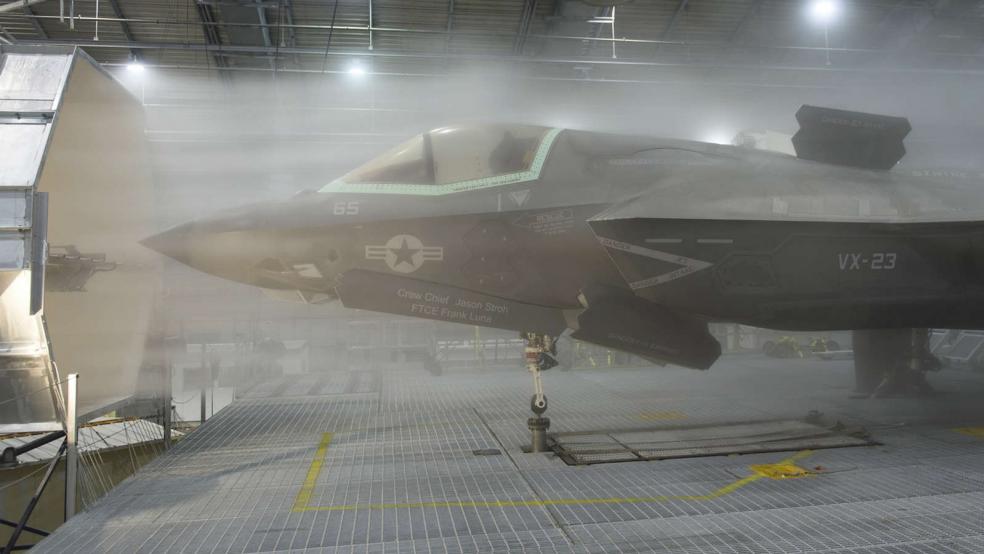For a little while, the snake-bit F-35 fighter plane seemed to be on a roll. This week, the U.S. and Israel signed a military assistance deal that will help Tel Aviv pay for dozens of the state-of-the-art aircraft at a price tag of more than $100 million per plane. Before that, it satisfied the military brass that it can integrate successfully with the Aegis missile defense system. All that good news came just weeks after the Air Force declared its first squadron of the new jets to be “combat ready” on Aug. 2.
Well, that was then. On Tuesday, according to Bloomberg’s Anthony Capaccio, the Air Force informed Congress that it had been forced to ground 15 of the jets because of a problem with the lines that deliver coolant throughout the plane.
Related: US Navy Tries to Convince the Public the F-35 Is Ready
Citing a statement sent by the Air Force to Congressional oversight committees, Capaccio reported that mechanics working on the planes had found “peeling and crumbling” insulation on the lines that carry coolant to the plane’s massive onboard computers and its combat systems. The letter warned that if the insulation were to get loose, it could find its way to other parts of the plane and cause serious damage.
The problem appears to be with the construction of the lines and not related to the design of the plane itself.
Nevertheless, it’s another embarrassing hiccup in the long saga of the plane that began life as the “joint strike fighter” and which was meant to save huge amounts of money by developing a plane that various U.S. military service branches could use, with moderate customization for their different needs.
Over its more than two decades in development, the cost per plane of the program has ballooned dramatically from the $50 million originally forecast, even as a plague of design flaws and other problems delayed deployment.
Related: Here's Why the F-35 Will Lose a Dogfight With the Russian Su-35
The latest issue with the coolant lines should be relatively minor compared to some of the other delays the plane has run into. But it will affect planes already under contract with U.S. allies around the world, and could cause more second guessing from foreign buyers about the wisdom of placing future orders.





